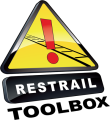10.1 Removal of vegetation to increase visibility
This includes an intervention to remove vegetation in known high priority areas. The aim is to remove a source of concealment (whether people hide deliberately or accidentally) thereby making pedestrians more visible around the railway premises.
- High priority areas include the areas near to crossings, stretches of high speed open line, areas near to stations. As an example this might include removal of all vegetation or specific bushes or trees in the vicinity of a crossing or station where there is a known problem.
- Make sure you respect nature and environment laws. For Europe, you may check the European Landscape Convention: http://conventions.coe.int/Treaty/en/Treaties/Html/176.htm
- Communicate with your neighbours before you start removing to get acceptance. Explain why you want to open the environment. External communications should be delivered in a cautious way so as not to highlight the attractiveness of railways as a means of suicide.
- Requires appropriate and regular maintenance in order for the effects to be durable (no place to hide prior to suicide); otherwise the concealment place will rapidly return with the plant growth.
- It is possible that potential victims could be displaced to other areas of the railway, meaning that the vegetation management program might need to be extended to other locations.
- It might be difficult to resolve some of the environmental concerns so indiscriminate removal of vegetation should be avoided.
- Removal may impact on privacy for some line side neighbours. People living nearby may not like the removal of established trees and communication might be needed to mitigate effects of this (to municipalities and neighbours).
- Removal of vegetation could reduce the effect of vegetation used as a barrier - if this were the case then alternative barriers would be needed.
- Costs and other potential implementation difficulties largely depend on the location type. Some parts of the work may be seasonal. For example in some countries vegetation clearance is restricted at certain times of year when birds are nesting.
- Needs to be considered as a group of measures. This action should always be combined with multiple measures such as lighting, fencing tracks, introducing signs at locations and other items of equipment. Removal of vegetation might have positive impacts on camera surveillance (visibility).
- The ecological implications of this measures must equally be considered. This measure involves cutting back vegetation (within acceptable limits) and should not require the use of herbicides. Cutting down large numbers of trees may cause environmental protests as it may conflict with other interests (i.e. environment or animal protection).
- As a side benefit, vegetation removal may also mitigate wildlife mortality on the railways by reducing the number of animals hit by trains.
- In Belgium, vegetation hindering the driver’s view and providing hiding place is being removed to improve the railway track visibility for the train drivers (Debbaut et al., 2013).
- Clearance of vegetation and removal of obstructions surrounding the level crossing is recommended (Horton, 2009).
- Vegetation removal was successfully employed along a railway in Norway, achieving a reduction in about half the number of moose casualties. However, in Sweden an opposite effect was found, suggesting that tree-clearing may increase moose and roe deer train collisions (Borda-de-Agua et al., 2017).
last update: 2019-07-17 Print

